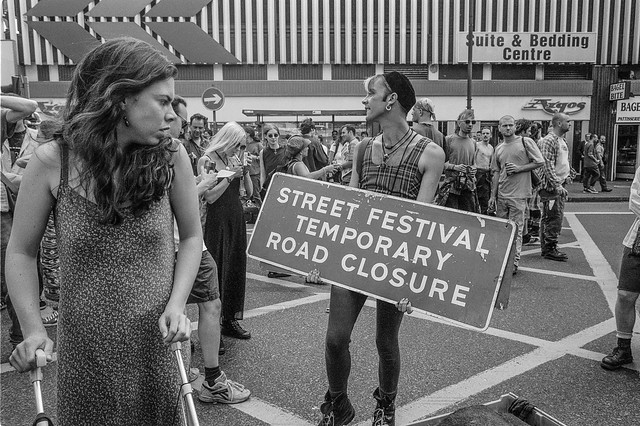Loddon & Thames: Eight years ago I published an account of a walk I made with Linda and Sam from Winnersh Triangle to Reading, not by the rather boring direct route of around 4.5 miles but along two of Berskhire’s rivers, the Loddon and the Thames. Here I republish te text in full, though the original is still on My London Diary, which also has many, many more pictures for those who are interested.
Loddon & Thames
Winnersh Triangle to Reading. Mon 27 Jul 2015
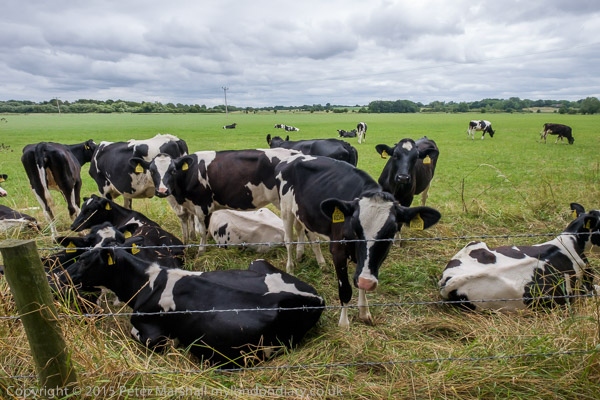
Winnersh Triangle sounds like a dangerous place to go, a new halt (hardly a station with a platform only a foot or two wide) on the Waterloo to Reading line that opened in 1986. It’s lightweight wood structure was designed not to put too great a load on the Loddon Viaduct on which it hangs, though there is a ticket office at ground level, closed when we arrived.
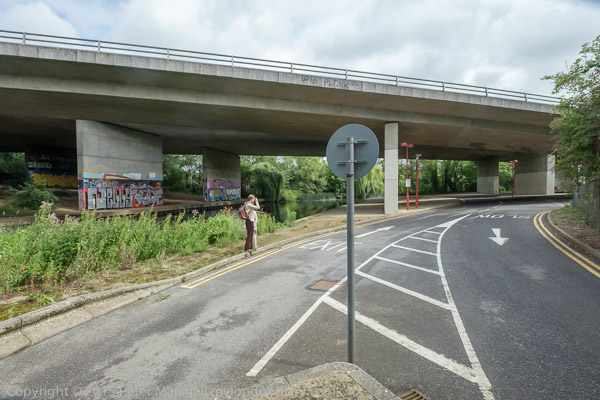
Mostly Winnersh Triangle is home to company men and the companies they work for in what the web site describes as “an 85-acre, mature business environment” between the A329M motorway, the rail line and the River Loddon. The web site says it’s a place where “everyday things become exceptional and exceptional things happen every day“, but very little seemed to be happening on the day we went there. It didn’t look like a place where anything of interest ever happened, and its big selling point is that you can be at Heathrow in 30 minutes.
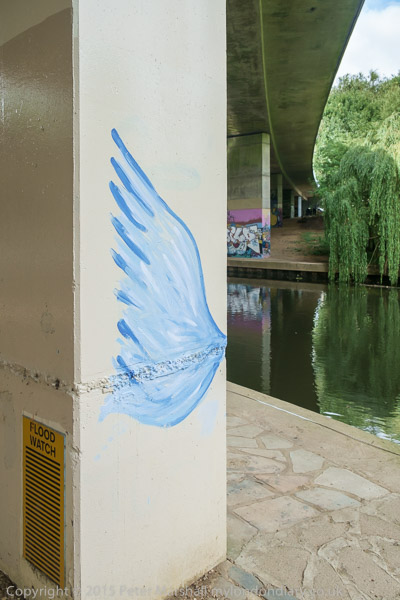
We took a quick look, didn’t like it and headed south under the railway to walk along the Reading Road to Loddon Bridge, joining a footpath that led north beside the River Loddon under the railway and motorway. You’ve probably never heard of the Loddon, but its a sizeable tributary of the Thames, that often gets too sizeable for its banks, flooding nastily. A man in council hi-viz who was checking the river gave us a 20 minute dissertation on this and related matters before we all escaped, though I’d wandered away taking pictures after the first five.
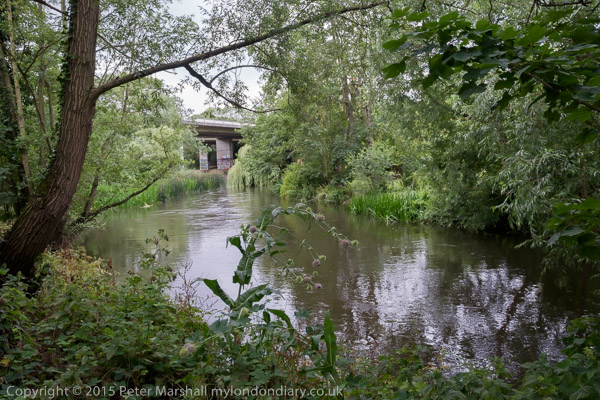
Fortunately the river was fairly low or we might have been paddling or swimming for the next mile or so, before the path veered away and climbed to a road and we found ourselves briefly in suburbia. Then we came across a large BEA twin prop plane, its presence soon explained by a sign ‘The Museum of Berkshire Aviation’. It was closed which saved us from having to decide if we wanted to be enthralled by “Berkshire’s dynamic contribution to aviation history.”
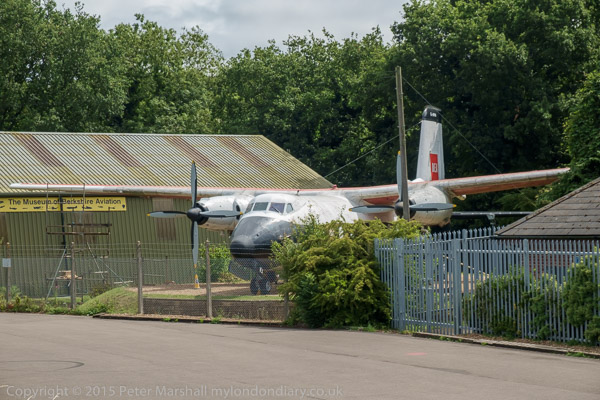
You can find out more on the museum web site, which includes a picture of a rather dinky little ‘Miles Pusher’, which was “built by F. G. Miles under protest and therefore never flew.” Miles went bust in 1947, and Handley Page took over the designs, accounting for the Handley Page Herald turboprop standing outside. Miles from 1942 had been designing an experimental supersonic jet aircraft to fly at 1000mph, but the Air Ministry in 1946 cancelled this, deciding only to build it as an unmanned rocket-powered scale model which achieved controlled flight at Mach 1.34 – 1020mph. The design of the Miles M52 informed the later English Electric Lightning which I saw at the Farnborough Air Show in the early 1950s and could out-perform anything from that era.
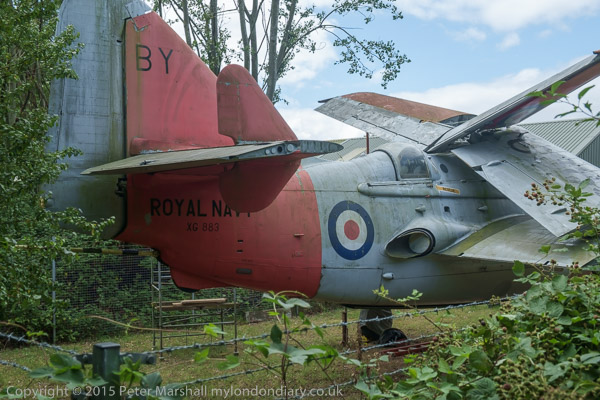
We didn’t hang around, though Sam looked up a few things on his mobile and we photographed the Fairey Gannet out the back before going along the footpath and down to the river to continue our path through rural Berkshire alongside the river to Whistley Mill Lane.
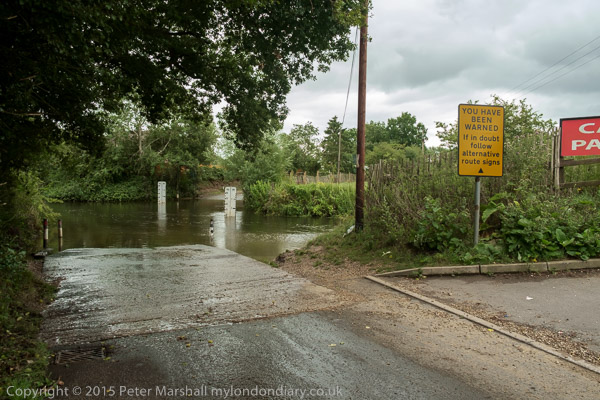

This leads to a ford over the Old River, still a stream of the River Loddon, and unless you are driving a Land Rover or something larger, its probably best to turn around and go back. The level markers were at 2 feet, but fortunately there is a footpath to a footbridge around 60 yards to the south which we crossed, taking us to the Lands End pub, which might have been a good place to lunch, but we had brought sandwiches.
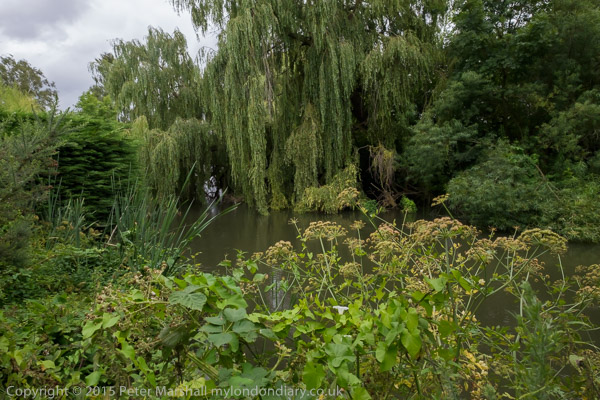
The next mile or so took us through the Charvil, a suburban fringe of Twyford, and with some difficulty across the A4 to Milestone Ave, a narrow lane with some 1930s development on the east side for the first half mile or so. Just before a bridge over one of the minor arms of the Loddon, a footpath leads off to the River Thames. We’ve previously walked along the Thames path on the opposite bank, which we came on to a mile or two later as it crosses the bridge at Sonning.
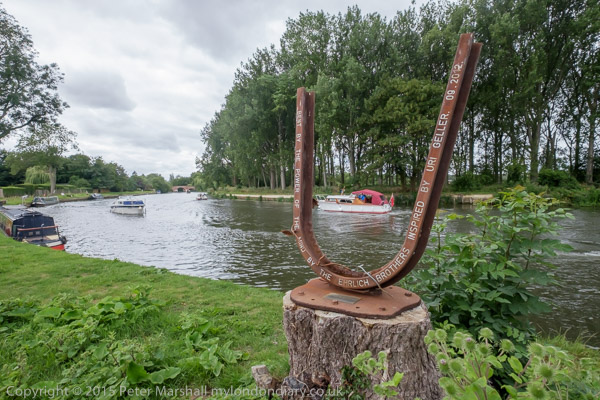
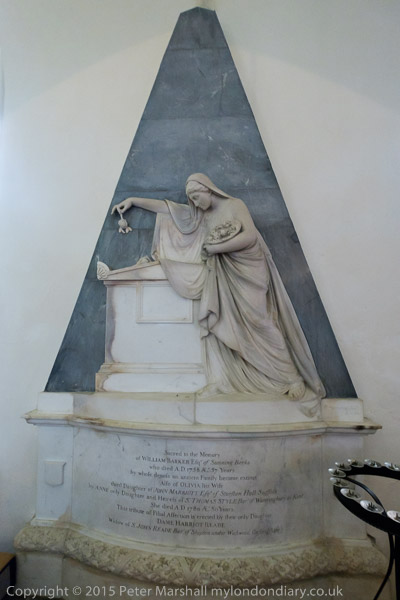
We took a look inside St Andrew’s Church there (and were given a copy of what must be one of the most lavishly produced church magazines in the country) and briefly explored the grounds before taking the path from the churchyard to rejoin the Thames path, walking along this into Reading for the train home.
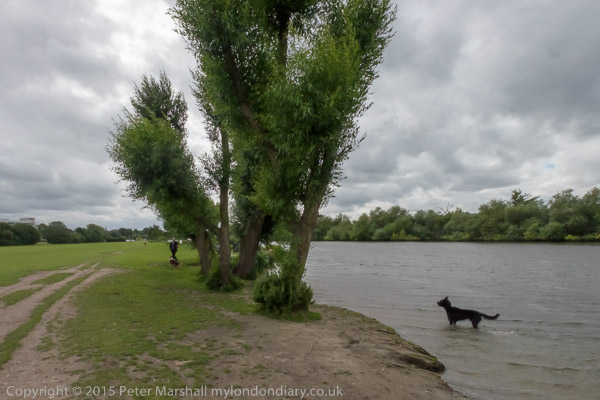
Many more pictures from the walk on My London Diary.



